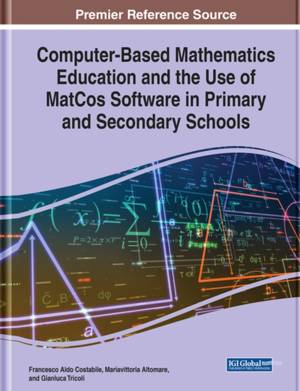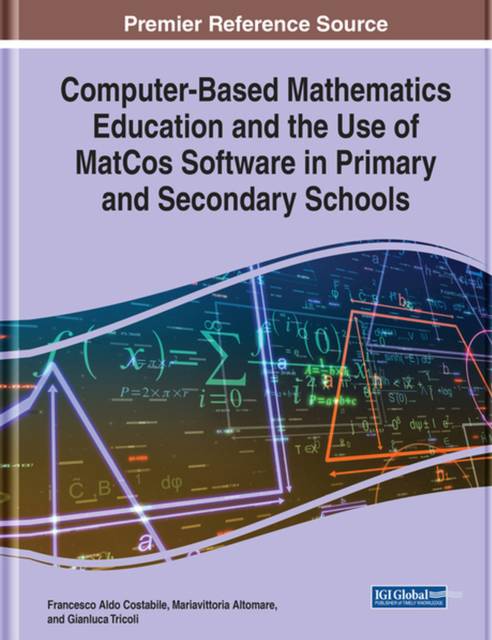
- Afhalen na 1 uur in een winkel met voorraad
- Gratis thuislevering in België vanaf € 30
- Ruim aanbod met 7 miljoen producten
- Afhalen na 1 uur in een winkel met voorraad
- Gratis thuislevering in België vanaf € 30
- Ruim aanbod met 7 miljoen producten
Zoeken
Computer-Based Mathematics Education and the Use of MatCos Software in Primary and Secondary Schools
Francesco Aldo Costabile, Mariavittoria Altomare, Gianluca Tricoli
Hardcover | Engels
€ 300,45
+ 600 punten
Omschrijving
The theme of inserting new digital technologies into the teaching and learning of mathematics from primary and secondary schools has provoked a wide and interesting debate. One such debate is the reformation of the foundations of mathematics to include computation (what and how to calculate) among the traditional themes (Arithmetic, Geometry, etc.) of mathematics. Thus, the authors propose the MatCos Project as a new approach for solving this issue. Computer-Based Mathematics Education and the Use of MatCos Software in Primary and Secondary Schools is a critical reference source that proposes a new pedagogical-learning paradigm that guides students in the formation of an active, logical-sequential, intuitive, and creative thinking that directs them towards problem-solving and starts students with computational thinking and programming in a natural way. The content of the book is divided into two parts, with the first exploring theoretical and pedagogical notes on mathematics and the second examining the MatCos programming environment and its systematic inclusion in teaching practice. Highlighting themes that include computer-assisted instruction, teaching-learning sequences, and programming, this book is ideal for in-service teachers, mathematics instructors, academicians, researchers, and students.
Specificaties
Betrokkenen
- Auteur(s):
- Uitgeverij:
Inhoud
- Aantal bladzijden:
- 540
- Taal:
- Engels
Eigenschappen
- Productcode (EAN):
- 9781799857181
- Verschijningsdatum:
- 7/08/2020
- Uitvoering:
- Hardcover
- Formaat:
- Genaaid
- Afmetingen:
- 216 mm x 279 mm
- Gewicht:
- 1528 g

Alleen bij Standaard Boekhandel
+ 600 punten op je klantenkaart van Standaard Boekhandel
Beoordelingen
We publiceren alleen reviews die voldoen aan de voorwaarden voor reviews. Bekijk onze voorwaarden voor reviews.











